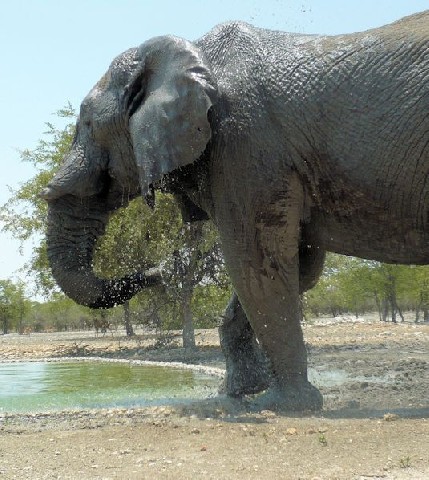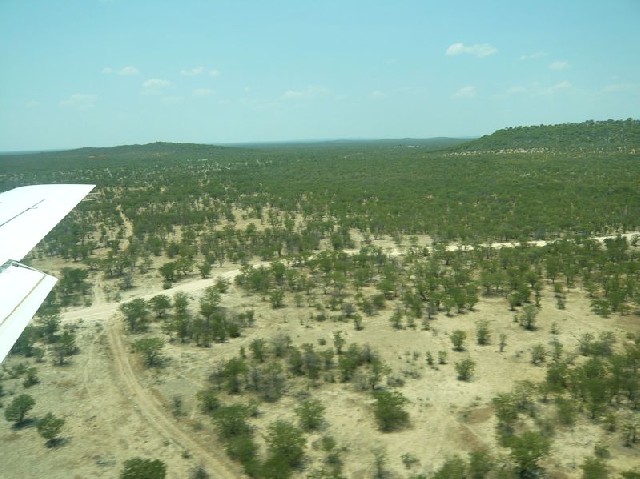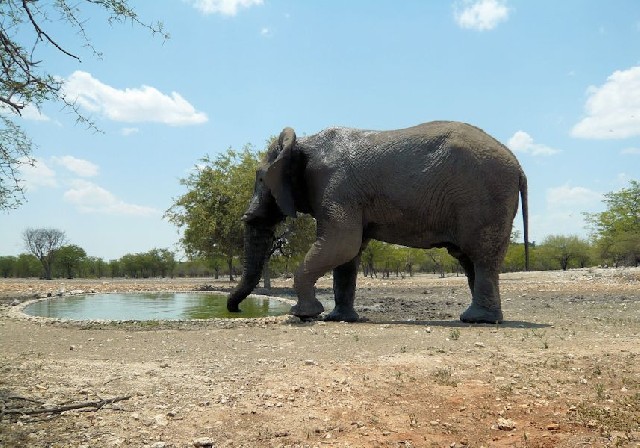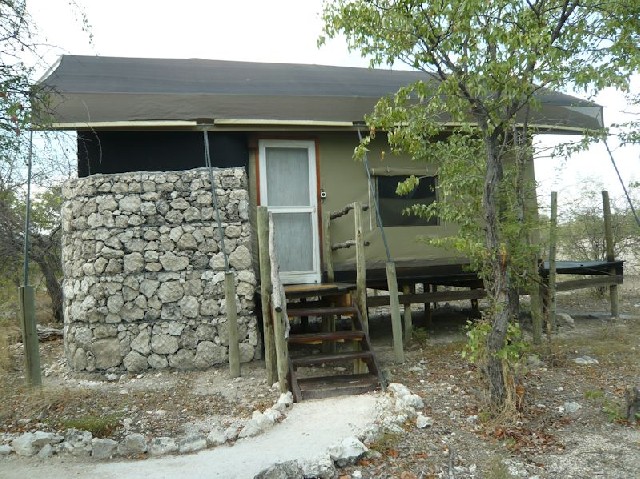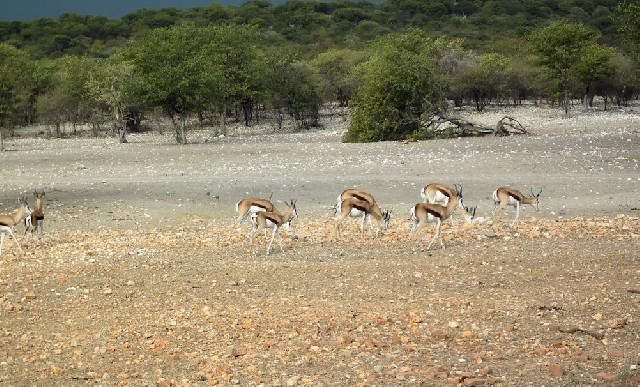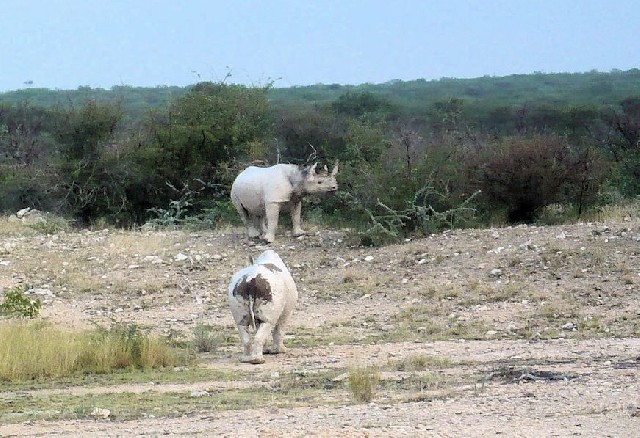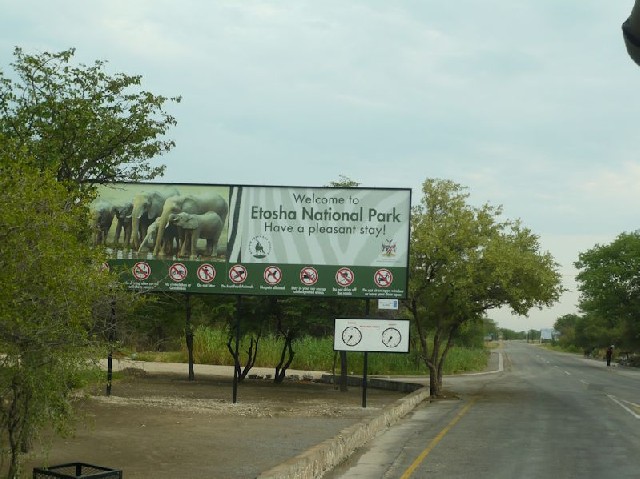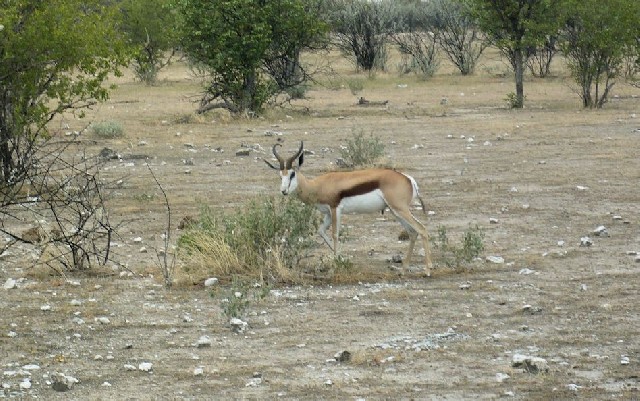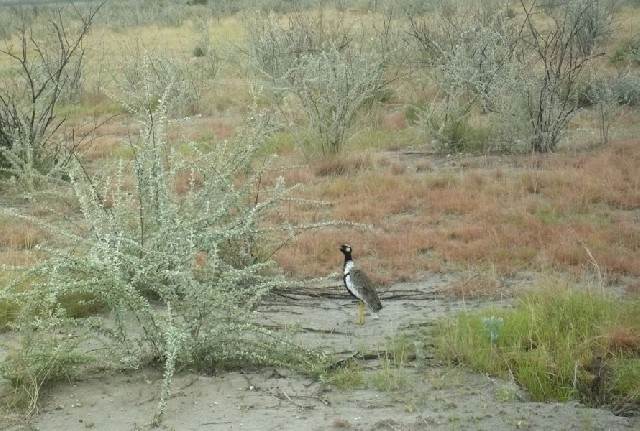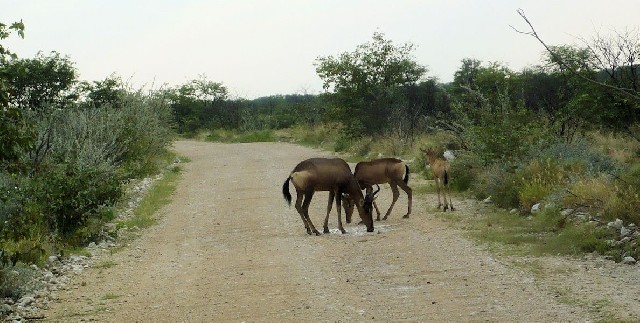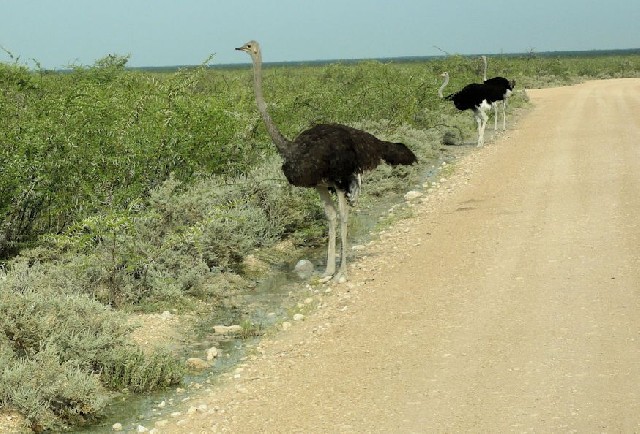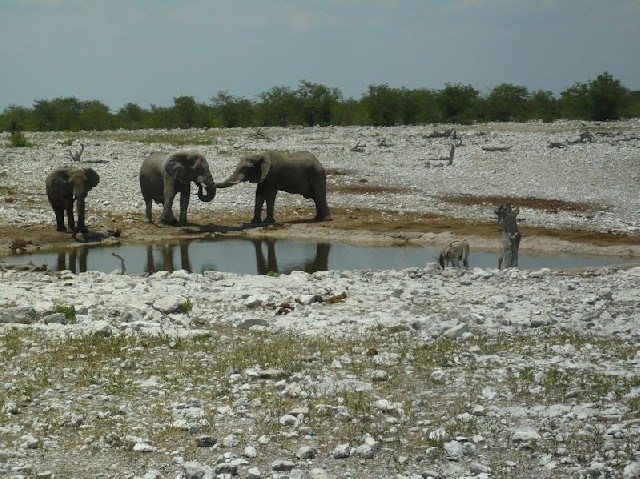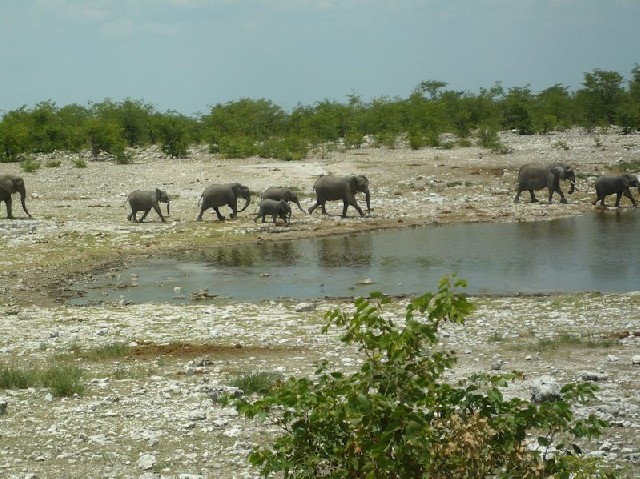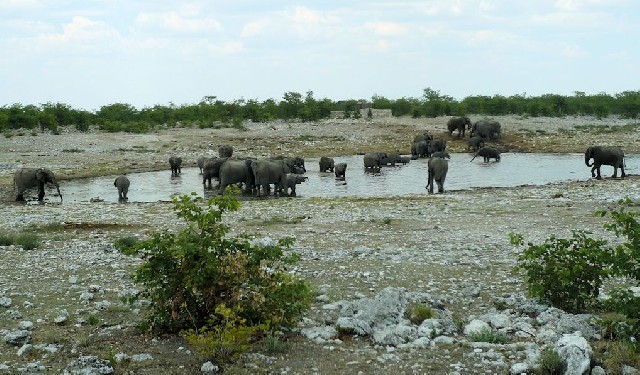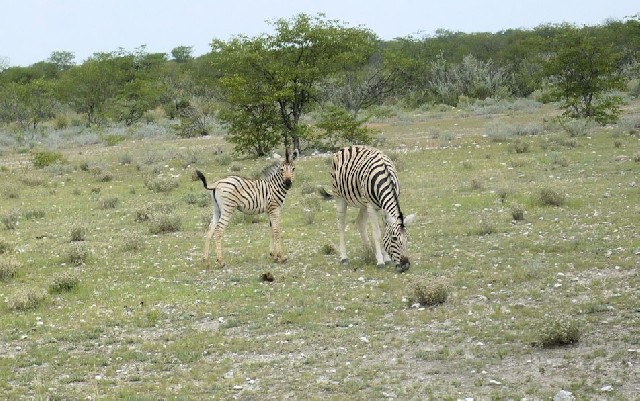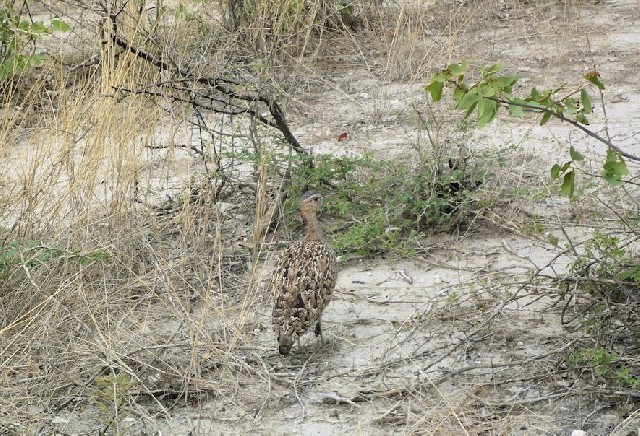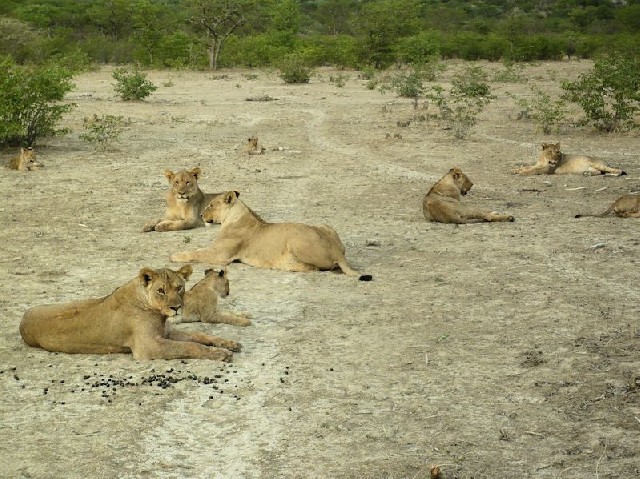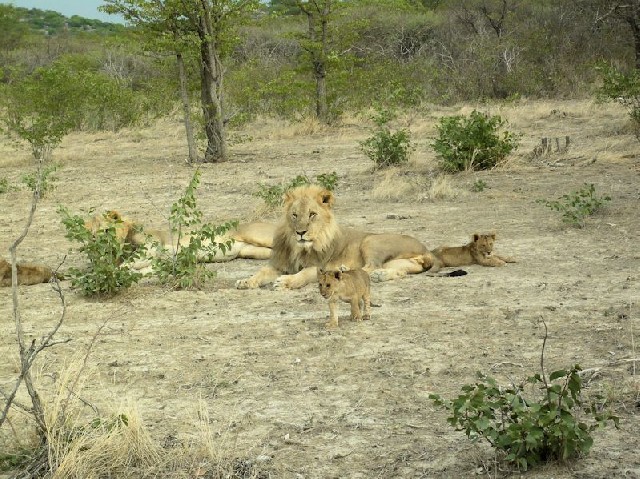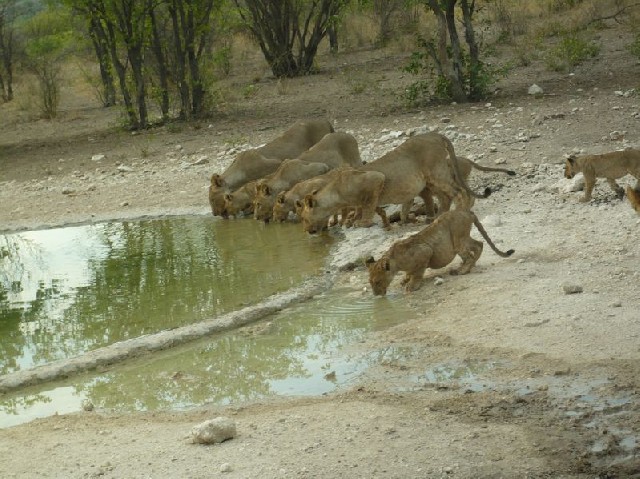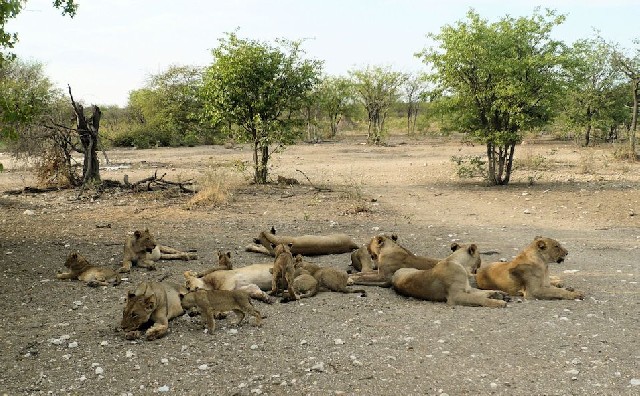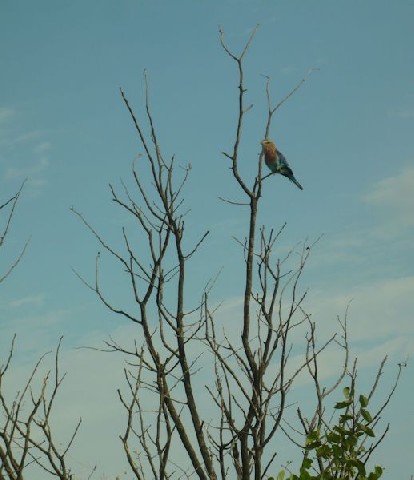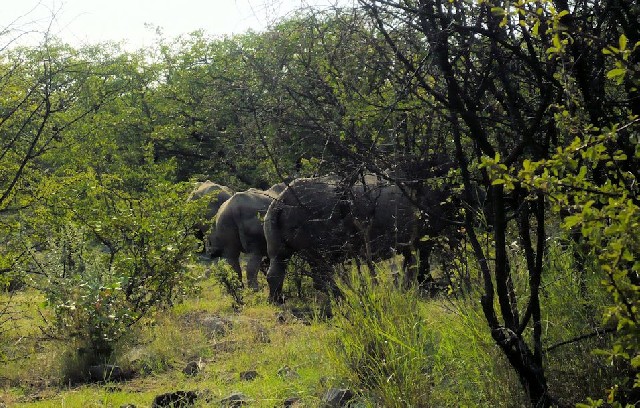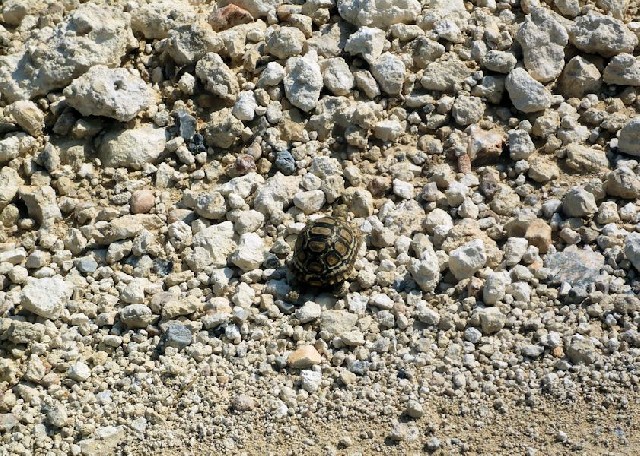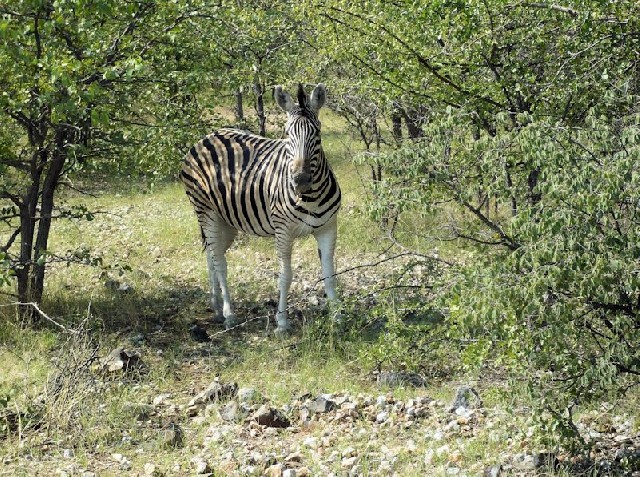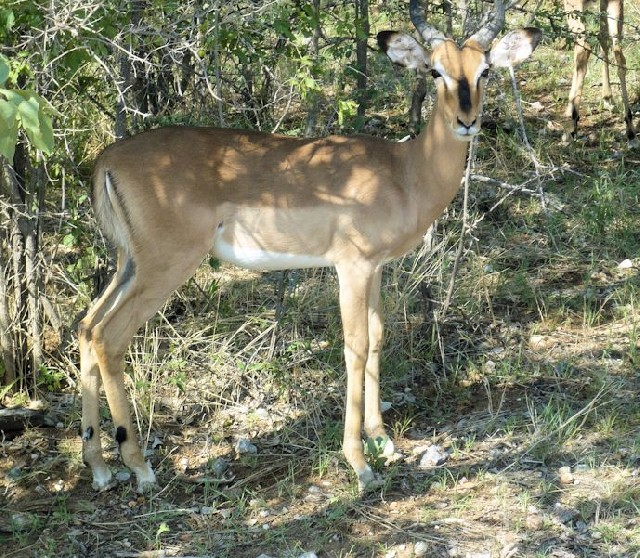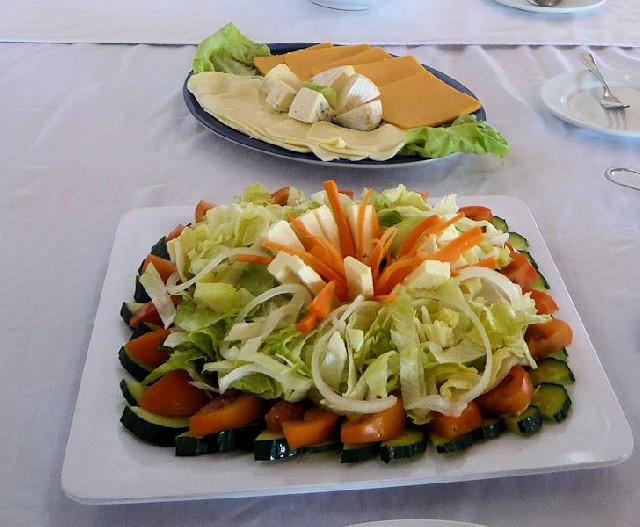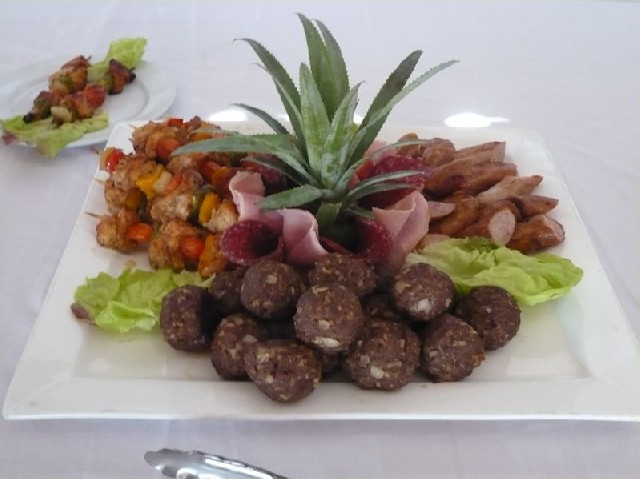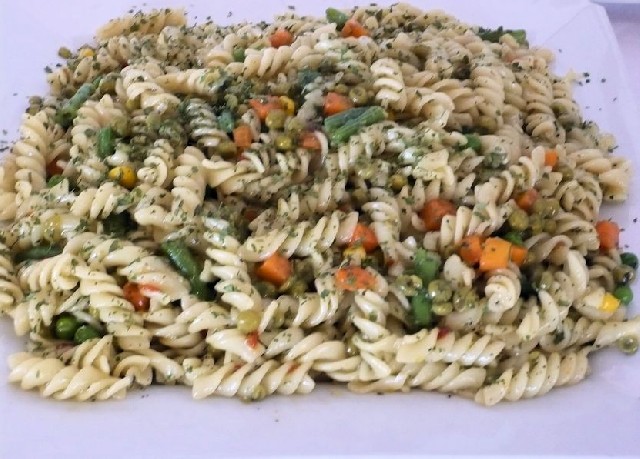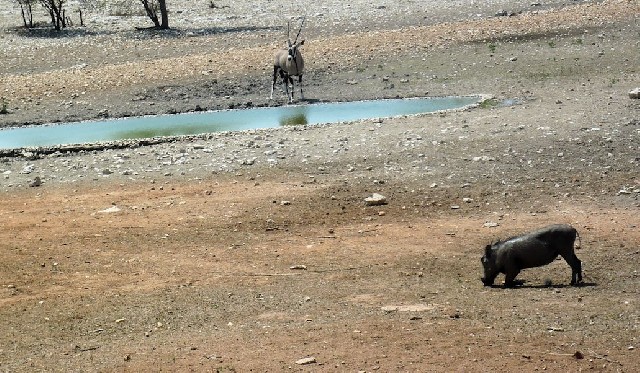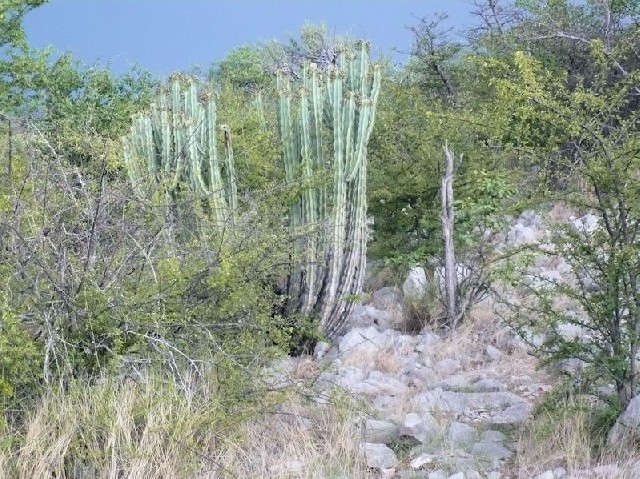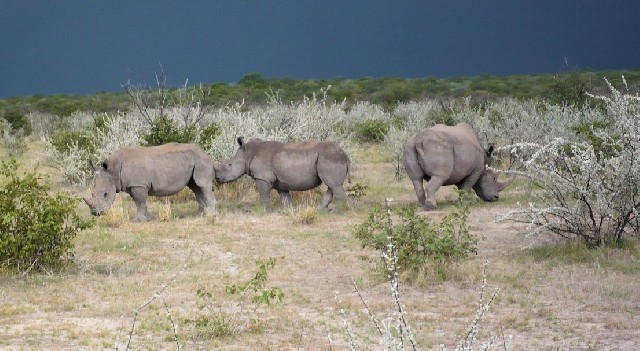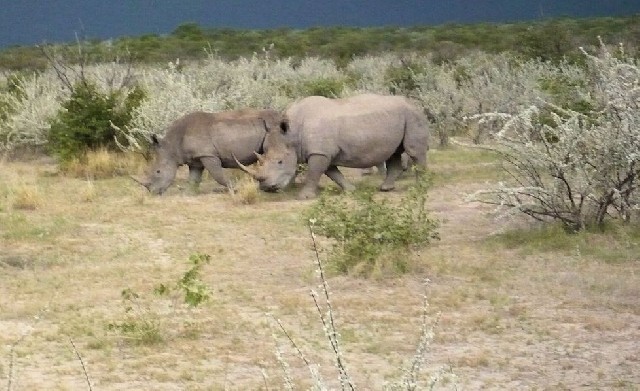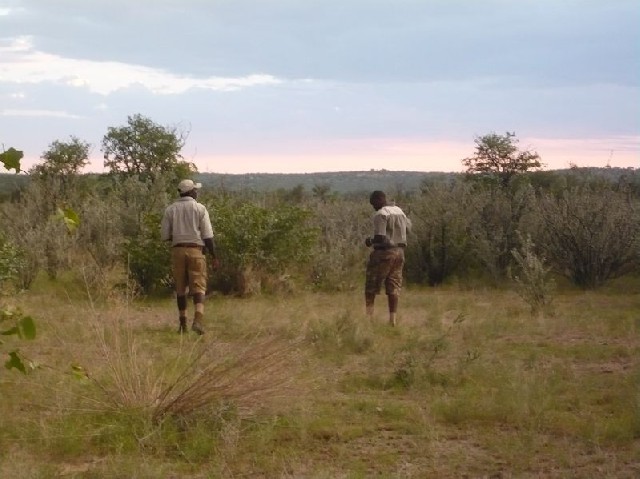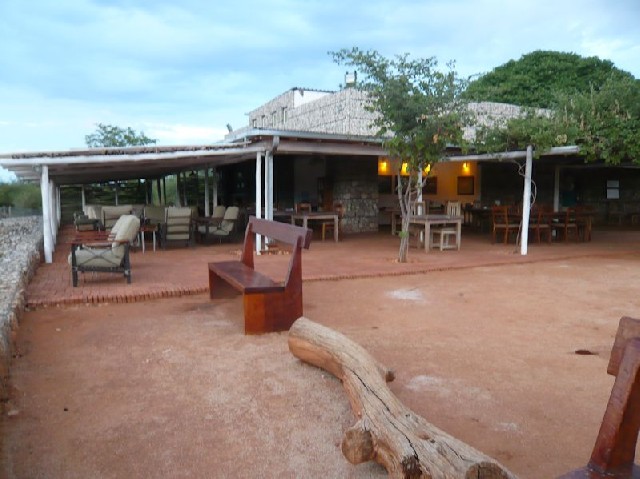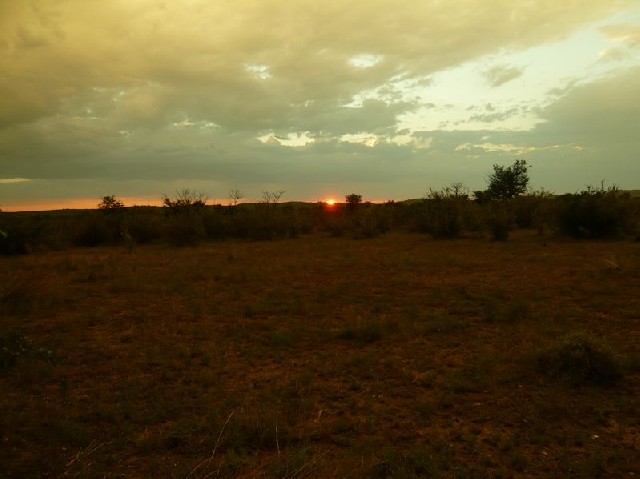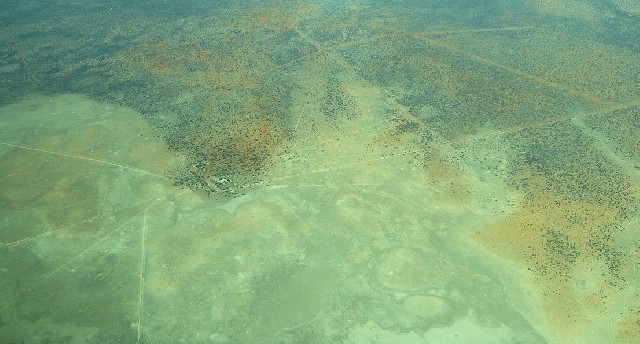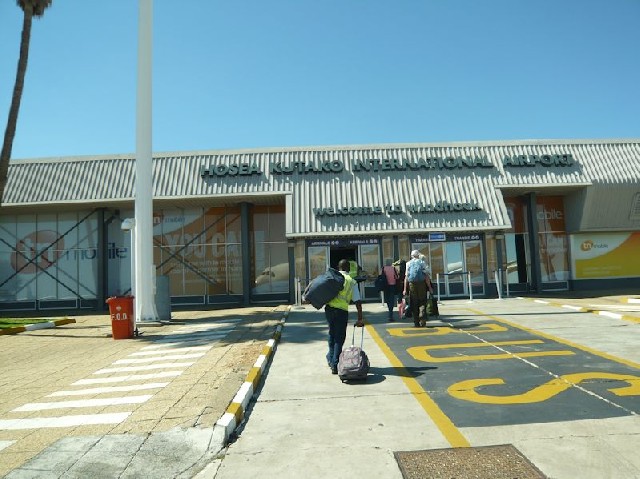Namibia: Part Five
Etosha National Park
By: Zeren Earls - Apr 27, 2015
A 30-minute flight took us to Ongava, a private game reserve dedicated to conservation, bordering Etosha National Park. As soon as we crossed a range of hills, the terrain turned green with lots of trees. We landed at a small airport, designed to look like a local hut. Upon arrival at Andersson’s Camp, named after the Swedish explorer, who traveled this area in the 1850s, we were surprised at the sight of a giraffe feeding within eyesight of the camp’s terrace, protected by an electric fence.
A former farmstead rebuilt to environmental standards, Andersson’s Camp has an underground hide for advantageous views of a busy waterhole, which attracts wildlife throughout the day. Before guiding us to our tents, the co-director of the camp led us through a sunken hide to get a close look at an elephant quenching his thirst. Standing on a stool and looking out a small window, I was able to see every move of the elephant at very close range as he drank and splashed himself to cool off, threw sand around to chase bugs, and used his tail like a fly-swatter. By the time we returned to the terrace, a family of warthogs and a variety of antelopes had gathered by the water hole drawn to it like a magnet in the heat of the day.
Lunch hit the spot, with salad as first course, followed by a choice of hamburger or pasta with vegetables, and ice cream topped with ground pistachios as dessert. Finally it was rest time in our tents — canvas and wood structures, raised on a deck with a veranda, and 100% solar powered. Although my tent was quite adequate for one person, I felt fortunate not to be sharing it with a roommate, as there was not much room beyond the double bed.
Later on we went for a walk; however, soon it began raining, causing us to go back, as our nature guides did not want their guns to get wet. With extra time in hand, I decided to check my email at the camp office. Much to my surprise, there was a message from my home caretaker informing me that, due to several blizzards in my absence, much snow had accumulated on my roof and that, if it was not removed, the roof might collapse. Not having much choice in the matter, I gave him the go-ahead to clear the snow off my roof! The contrast in climates of where I was and what I was reading was surreal.
As was the case at other Wilderness Safari Camps, dinner was delicious and beautifully presented — mushroom bacon soup, roast chicken or oryx steak, accompanied by spinach, carrot, potatoes, and a green salad, and followed by date cake with custard sauce. Returning to my tent, I found under the mosquito netting on the bed a handmade welcome card with a zebra print, which read “Study nature, love nature, and stay close to nature. It will never fail you. We trust that your stay with us will be memorable.” Such was the beginning of a two-day immersion in nature.
Early in the morning we left for Etosha National Park. Etosha, meaning “great white place” in Herero, is a vast salt pan, which was once a lake that dried up eons ago, when the river feeding it changed course. Its parched surface is surrounded by savannah plains, which attract a wide range of wildlife due to many underground springs. Before we entered the park, we spotted two white rhinos not far from our path, as Ongava plays a significant role in their conservation. This was a lucky encounter as our first white rhino sighting.
Etosha National Park is Namibia’s premier savannah wilderness, established in 1907 during Germany’s colonial period, and held the distinction of being the world’s largest game park for 60 years. Although it was slashed to a quarter of its original size in 1967, it is now roughly the size of Switzerland, and is the world’s third largest animal sanctuary, including a high-density big game population. It has 114 mammal and 340 bird species.
During a full-day game-viewing drive, we saw many animals at close range — giraffe, kudu, impala, oryx, springbok, wildebeest, zebra, families of elephants by waterholes, lions resting in the shade, and ostriches by the roadside. Animals and birds seemed to enjoy even the small puddles on the roads with relatively few visitors around. Meanwhile, we also took a break at a picnic table under a tree to enjoy a box-lunch — ham and cheese sandwich, greens and bean salad, apple, yogurt-health-bar, and peanuts. Having started out at 7 am, we called it a day by 5 pm and drove back.
Over a cocktail, I enjoyed getting to know the co-directors of the camp, a young couple, and both descendants of German and English settlers. The husband, born in Namibia, was fourth generation German from Stuttgart, yet had never been to Germany due to the unfavorable exchange rate of the Namibian dollar to the Euro. His wife, a first generation Namibian, was the daughter of an English mother and German father, who had met in Namibia. Hired by Wilderness Safaris as co-directors of the camp, they supervised a staff of 48 people from different ethnic tribes and took turns managing the early morning and late night shifts.
Following this insightful conversation, we enjoyed dinner, which started with corn and carrot chowder, followed by selections from the buffet — lamb or pan-fried fish with tartar sauce, couscous, broccoli, eggplant, and green salad. Dessert was yogurt brulée.
In the morning the game-viewing drive of our final day led to spectacular discoveries. Shortly after leaving at 7 am, we encountered a group of lions — 19 in total — all stretched out asleep in an open area. As they woke up, some gradually shifted positions from lying to sitting or standing, while young ones began to play, and babies crowded around their mothers’ teats to suckle. The majestic male lion, his eyes fixed ahead like a watchman sat apart from the crowd, and at times was joined by the little ones. We were so enchanted by this domestic tableau that we spent about an hour observing the lions from our parked vehicle. We also followed them to the waterhole and enjoyed watching the lions line up to drink at the water’s edge.
Continuing our adventure, this time on foot, we followed a trail in single file behind our nature guides, equipped with gun and pellets, to track rhinos. Although it is a crime to kill any wildlife in the park, the guns provide a reassuring presence in case of danger. Detecting rhinos behind the trees, we followed the guides in complete silence. Holding my breath, I approached them from behind to snap photos. Mission accomplished, we exited the trail, spotting on the ground a velvet mite and a leopard tortoise — two small creatures in the land of giants.
As we rode back to the camp for an 11 am brunch, the feast of wildlife at close range continued — impala, blue wildebeest, zebra, and many birds. The camp’s productive waterhole was busy as usual with graceful antelopes, their shadows reflecting in the shallow waters.
Brunch consisted of a beautiful display of salads — pasta, potato, and greens — skewered kebabs alternating with tomatoes, peppers, and onions, and a variety of cheeses, cold cuts, and breads. Free time until 5 pm consisted of packing for our long journey home the next day.
A final game-viewing drive rewarded us with more giraffes, wildebeest with young ones in tow, and, surprisingly, more rhinos, this time facing us in full view. They owe their presence to a successful breeding program, which has increased the numbers of white rhino from six in 1995 to more than thirty now. We also saw a black-faced impala, one of the area’s rare breeding populations.
The weather turned on us, threatening to rain. At the sight of lightning, we returned to camp. During a final sundowner, the looming clouds in the majestic African sky added to the drama of the sunset. Our farewell dinner of sliced tomatoes with mozzarella, beef stew with mashed sweet potatoes, green beans, and salad ended with a delicious dessert of Amarillo mousse.
“It is not what you look at that matters; it is what you see. We hope you have seen a lot and enjoyed your stay here with us,” said the farewell note on the bed when I returned to my tent. Indeed, this was a trip where I saw a lot, not only in Etosha, but in all of Namibia. Among my memorable images are the diverse tribes, noticeable in dress, language, craft, and music; the enormous red sand dunes of the Namib Dessert; the rich wetland of Walvis Bay with its coastal birds; the haunting Skeleton Coast; the rock formations and engravings of Twyfelfontain; and the Etosha salt pan with its fringing grasslands and woodlands teeming with unique wildlife.
Early in the morning, we departed Ongava in our small plane to fly back to Windhoek, our starting point in Namibia, and to connect to our various US flights in Johannesburg. I asked to sit next to the pilot to get a good view of the Etosha salt pan from the air. As we flew over the remote land, I reflected on the Namibians’ admirable, far sighted efforts to preserve their natural assets and to conserve the diverse wildlife despite limited resources. Our interactions with the friendly natives underscored Joel’s reference to Namibia as the “land of the brave.” Having survived many hardships, here was a nation proud of its achievements and moving forward. I was grateful for the opportunity to get a glimpse of this beautiful part of the world unknown to so many.

